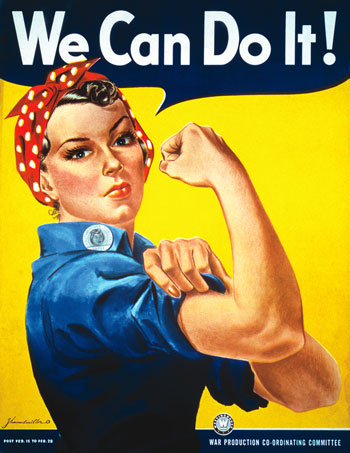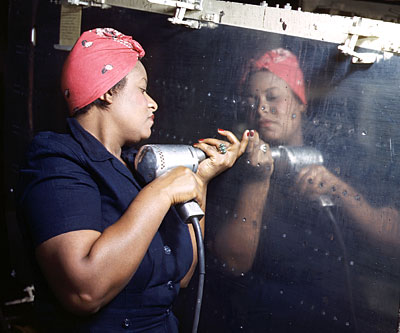The Role of Women in the War
Before the onset of the war in 1939, it was uncommon for married women to work outside the home. Mainly single women worked at traditional jobs, such as teaching , nursing , and secretarial or office work . These views even held true during the Depression. It was not deemed as socially respectable for married women to work.
This all changed when war broke out. With husbands, brothers, fathers, and boyfriends away, women were forced to take on less -traditional roles. “Rosie the Riveter,” a fictional character who worked in a defense plant, became the new norm for American society. The importance of social status was replaced with patriotism as more and more women entered the workforce. Additionally, the labor shortage imposed by the war created a need for women to take on new responsibilities.

Rosie the Riveter poster
Women faced many challenges as they embraced their new roles. Child care was a major obstacle for working mothers during the war . Day care centers were scarce during this period because there had never really been a need for them before the war. Most women were forced to juggle their famil ies and their jobs.

Real-life female riveter
Most employers were not very welcoming to women, either. Many factory owners felt that women were just not up for the challenge. Such attitudes were reflected in the salaries women received. Despite these obstacles, however, after the war, many women were not so eager to return to the traditional roles they had previously held.